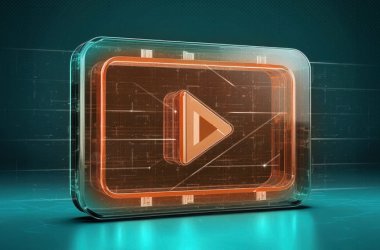 Starbucks said this week it has seen plenty of customers interested in using smartphones to pay for their coffee.
Starbucks said this week it has seen plenty of customers interested in using smartphones to pay for their coffee.
The coffee giant is now using barcode reading technology in payment apps on iPhone, BlackBerry and now Android smartphones rather than waiting for up to three years for Near Field Communication (NFC) chips to be widely available on smartphones in the U.S., Starbucks executive Chuck Davidson said.
At the same time, the Starbucks executive didn’t dismiss NFC technology, which is widely viewed as more sophisticated than barcode scanning. However, there are a number of barriers to widespread NFC adoption in the U.S.
Starbucks does offer plenty of information to users of its smartphone barcode system by offering a less sophisticated two-way communications via the wireless cellular network.
With a Starbucks card, users can upload funds from a major credit card over the Internet. The balance on the card is accessed from the smartphone via the cellular network (or perhaps Wi-Fi). If the balance exceeds the purchase amount, the smartphone user can authorize the payment and scan the barcode over the reader in the store.
The Starbucks system lets customers detect whether they’ve bought enough of the company’s products to qualify for a free coffee or add money to the card by using a smartphone connected to the Internet. Starbucks also allows users to find nearby Starbucks stores from the app over a cellular network.
NFC technology allows for two-way communication between a device and an NFC terminal at a cash register or pay station. Barcode scanning is a one-way gathering of data that’s contained in a barcode.
The NFC’s two-way communication would allow a merchant, bank or credit card company to send data, such as customer loyalty information, coupons or an actual payment via the NFC terminal in a store to a smartphone. The recently announced Google Wallet concept builds on that capability. The NFC technology has led to multiple marketing scenarios. For example, a user’s GPS location could be paired with a just-completed purchase to recommend a nearby restaurant or movie. Or a savvy retailer at a competing store could offer a 15% discount on a similar product the user just purchased via NFC at a different store.
The biggest difference in barcode scanning in the Starbucks case and NFC is that the latter can actually route a request to pay for something to a user’s bank and credit card through the store’s NFC terminal. The NFC payment process would be like using a credit card (or debit card) instead of a pre-paid gift card, which is essentially what the Starbucks card is.
NFC also allows smartphones to be used to pay for items or services purchased at any vendor that recognizes the technology. The Starbucks card only works at the company’s stores.
In South Korea, Japan and some European cities where NFC is widely used on smartphones, users can quickly enter a PIN and then swipe the device near an NFC terminal to signify that the amount is correct.
“If NFC were just a way to replace the magnetic stripe credit card — which is what the barcode system is — with your phone, than an alternative payment solutions such as what Starbucks has implemented may suffice,” noted Mark Hung, an analyst at Gartner. “But it wouldn’t scale very well, as you’d need a separate app for each merchant.”
Beyond making payments, NFC technology allows for transmission of coupon offers, promotions and loyalty information “with a single tap,” Hung added. “This is much more powerful than what can be accomplished with barcode technology.”
According to Hung, despite the Starbucks current success with barcode systems, its unlikely to spread to many other retail operations.
“NFC does have traction [in the U.S.] but it just takes time for there to be enough critical mass to make it interesting for merchants,” Hung said. However, he did agree with Starbucks officials that it will take two to three years before NFC is widely used in the U.S.
“The Starbucks [barcode] experiment is actually a very positive development for NFC,” Hung concluded. “It shows that people are willing to pay using their phones.”





